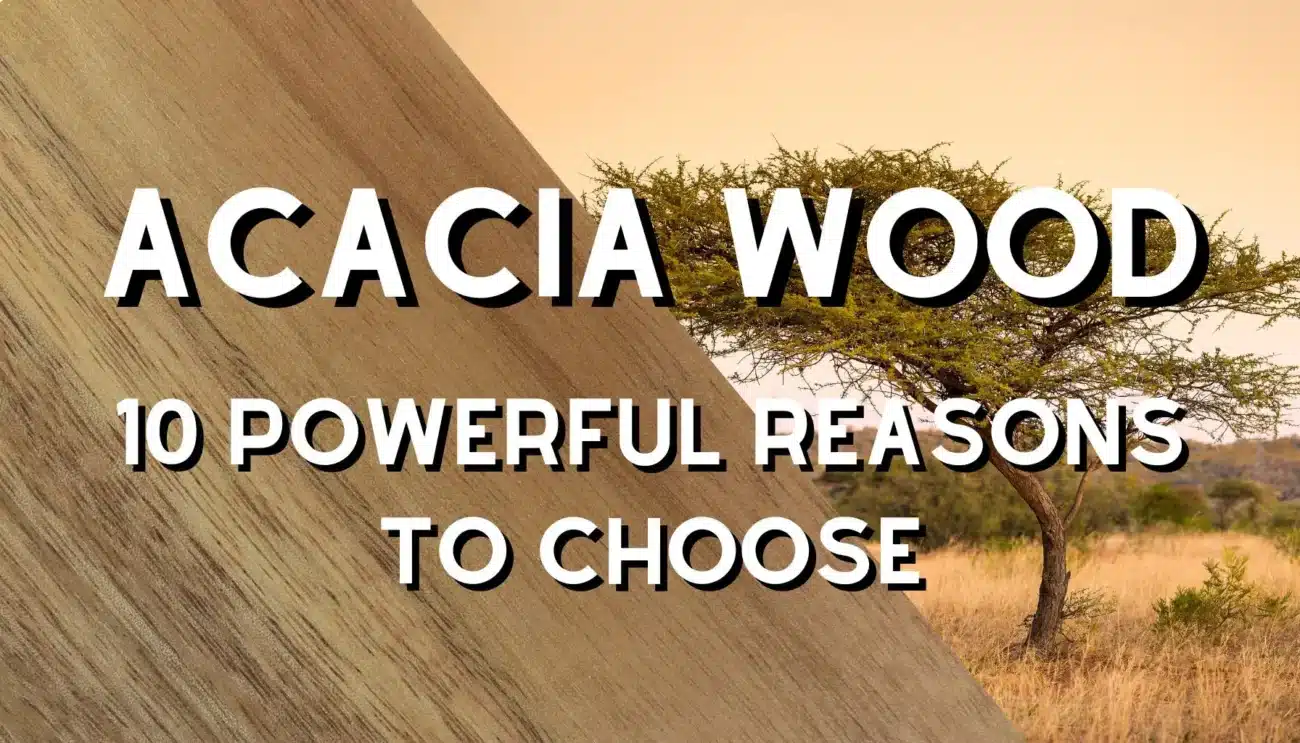
Acacia wood is 55% harder than European white oak and 90% harder than carbonized bamboo. Its durability and good looks make it a top choice for making long-lasting, attractive furniture.
Acacia comes from over 1,350 species, mainly from Australia. It stands out with warm browns, rich reds, and unique grains. It’s water-resistant and fights microbes, perfect for furniture, countertops, floors, and decorations.
Acacia is also known for its eco-friendliness. The trees grow fast without needing harmful chemicals. This green approach helps the planet and boosts local economies.
Keeping acacia wood furniture in top shape is easy. Just clean it with soapy water and keep it away from strong cleaners and sunlight. With care, your acacia furniture will look great and last for years.
This guide covers everything about acacia lumber, from its origins to its many uses and care tips. If you’re thinking about using acacia lumber or just love its beauty, this guide has the info you need.
Table of Contents
What is Acacia Wood?
Acacia wood is famous for its strength and beautiful look. It is a top choice for furniture and decorations around the world. The wood is from the acacia tree, which is very tough and useful for many things.
Origin and Description
Acacia wood comes from areas mostly in Australia and Africa. It’s also found in parts of Asia, South America, and the Pacific Rim. Acacia trees can grow up to eight feet each year. This makes them common and good for the environment.
Their Janka Hardness rating is high, making them dense and durable. For instance, Babul Acacia has a rating of 2300 pounds of force.
Varieties of Acacia
There are over 1,350 acacia tree species around the globe. Some well-known ones include:
- Australian Blackwood (Acacia melanoxylon)
- Monkey Thorn (Acacia galpinii)
- Hawaiian Koa (Acacia koa)
- Babul Acacia (Acacia nilotica)
These types all have strong and smoothly textured wood. Their grain patterns and colors can vary a lot, from light amber to deep mahogany.
Distribution and Habitat
Acacia trees can grow in many different places, from dry deserts to lush rainforests. This versatility makes them very tough. Babul Acacia is especially widespread in Asia, India, and the Middle East. It’s both affordable and widely used.
| Species | Janka Hardness (pounds of force) | Color Range | Primary Regions |
|---|---|---|---|
| Babul Acacia | 2300 | Light amber to dark mahogany | Asia, India, Middle East |
| Australian Blackwood | 1160 | Rich brown hues | Australia |
| Hawaiian Koa | 1200 | Golden-red brown | Hawaii |
| Monkey Thorn | 1400 | Red-brown shades | Africa |
Characteristics of Acacia Wood
Acacia wood is well-loved for its durability, beauty, and strength. It comes from over 1,300 types of acacia trees. This makes it very popular for different uses, like making elegant furniture and outdoor items.
Durability
Acacia wood stands out for its long-lasting qualities. It can handle wear and tear, making it perfect for furniture and floors. It doesn’t easily scratch, soak up water, or rot. This means items made from acacia stay beautiful and useful for years.
Particularly, the Monkey Thorn tree produces wood that’s great for outdoor furniture and boats.
Appearance
People love acacia lumber for its amazing look. It has warm shades from light browns to deep reds. The wood’s natural pattern adds elegance to any item. Australian Blackwood has lovely golden to dark brown colors. It’s ideal for top-quality furniture and cabinets.
Also, Hawaiian Koa is known for its rich colors. It’s the preferred choice for making musical instruments and traditional crafts.
Density and Hardness
Acacia is a strong hardwood with a smooth feel. Its durability comes from its acacia wood hardness, measured by the Janka Hardness rating. This rating shows it’s as tough as hickory, which means it’s perfect for long-lasting furniture and decor. Hawaiian Koa is especially hard, showing its toughness for many uses.
| Wood Type | Color Range | Durability | Hardness |
|---|---|---|---|
| Australian Blackwood | Golden to Dark Brown | High | Medium to High |
| Monkey Thorn | Light Brown | Very High | High |
| Hawaiian Koa | Deep Rich Colors | High | Medium to High |
Acacia wood’s toughness, beautiful look, and strength make it a favorite in many fields. It fits perfectly in both luxury furniture and practical outdoor spaces, showcasing its remarkable features.
Types of Acacia Wood
The Acacia genus includes many species, each with its own special features. We will look at three well-known kinds: taiwan acacia, mulga acacia, and Hawaiian koa wood. These types each bring something special to the table.
Taiwan Acacia (Acacia Confusa)
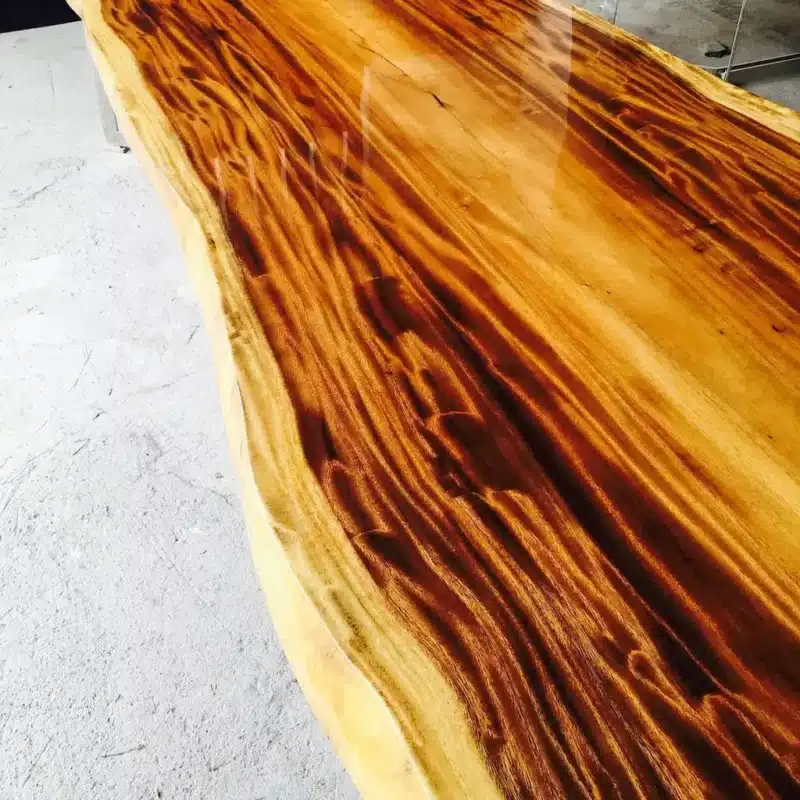
Also known as acacia confusa, this wood is a dense hardwood found mainly in Asia. It’s praised for being strong and long-lasting, perfect for furniture and decorations. It’s also very tough against wear, water, and mold because of its density.
Mulga Acacia (Acacia aneura)
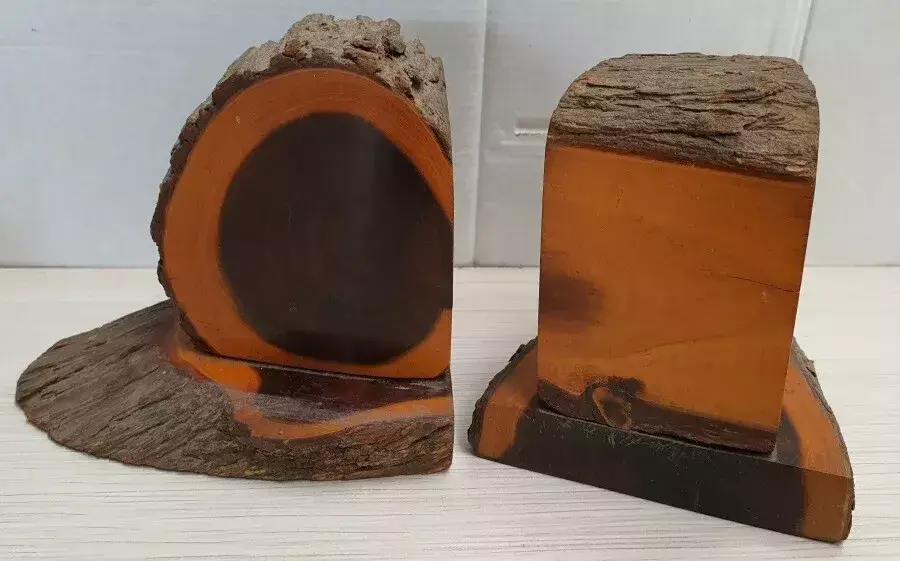
This wood comes from Australia’s dry places and is known for being extremely hard and resilient. It’s great for making outdoor furniture and tool handles, thanks to its strength against the weather. Mulga also has a deep connection to aboriginal traditions, being used in many customary ways.
Hawaiian Koa (Acacia koa)
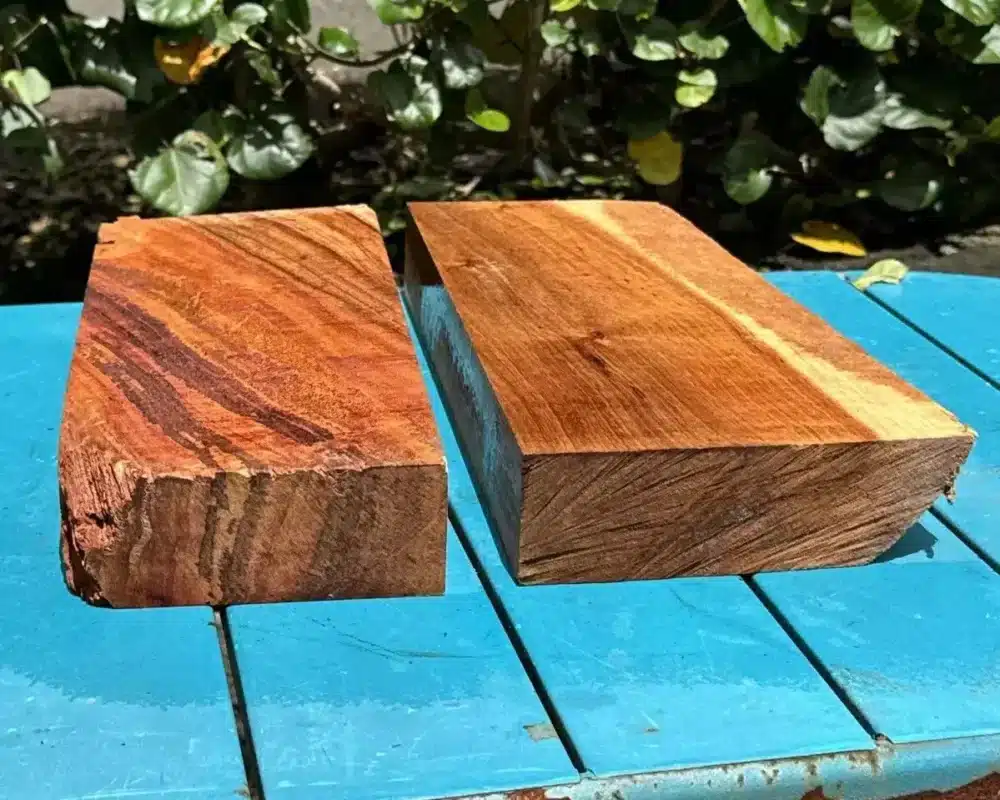
Hawaiian koa wood is a favorite because of its beautiful color and pattern. It’s not just for high-end furniture, but also a part of Hawaiian culture, seen in ukuleles and canoes. With a Janka hardness of 1,790, it’s as sturdy as it is attractive for crafting fine woodwork.
| Type | Region | Hardness (Janka) | Common Uses |
|---|---|---|---|
| Taiwan Acacia (Acacia Confusa) | Asia | 3,100 | Furniture, Decorative Items |
| Mulga Acacia | Australia | 310 | Outdoor Furniture, Tools |
| Hawaiian Koa | Hawaii | 1,790 | Luxury Furniture, Cultural Artifacts |
Uses of Acacia Lumber
Acacia wood is known for its durability and resistance to the elements. It’s popular in many woodworking projects. These range from detailed craftings to large furniture pieces.
Acacia Woodworking
Woodworkers like acacia wood because it’s dense and hard. This makes it perfect for strong, lasting items. Its fine texture and varied grain patterns are visually attractive.
The world has about 1,350 acacia species, supporting a range of projects. This includes boats, bowls, and jewelry.
Furniture
Acacia wood is great for making furniture due to its natural hardness. It has a Janka Hardness rating of 2300 pounds. This ensures the furniture is strong and durable.
It’s chosen for indoor and outdoor furniture like dining tables and cabinets. Its scratch resistance and unique grain patterns make each piece special and beautiful.
Acacia Wood Outdoor Furniture
Acacia is perfect for outdoor furniture because it withstands weather well. Its natural water resistance makes it ideal for use in places like patios and gardens.
Types like Babul Acacia are easy to find in Asia and the Middle East. This makes acacia furniture affordable and long-lasting.
Acacia Wood Cutting Board
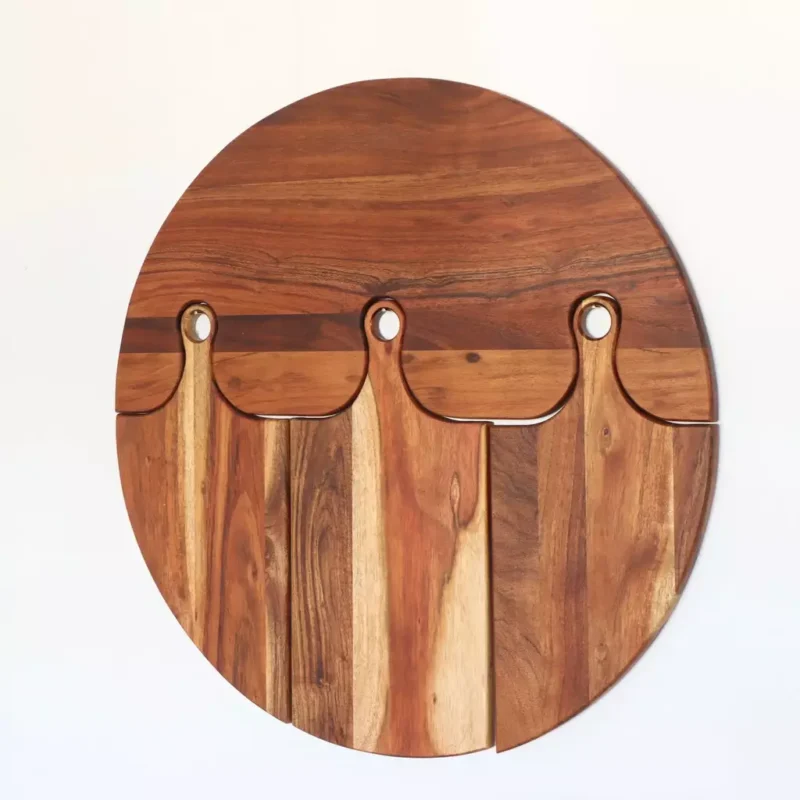
Acacia wood cutting boards are sought after in kitchens for their antibacterial qualities. They’re harder than hickory and carbonized bamboo, which means they last longer under frequent use.
With a density lighter than marble, they’re easy to use. Yet, they remain strong and resistant to knife marks. This makes acacia cutting boards practical and clean for kitchen use.
Acacia Wood in Furniture Making
Acacia is great for furniture because of its beauty and practicality. It has over 1,350 types, but Babul (Acacia Nilotica) is a top choice. This type is known for being very hard, dense, and easy to find.
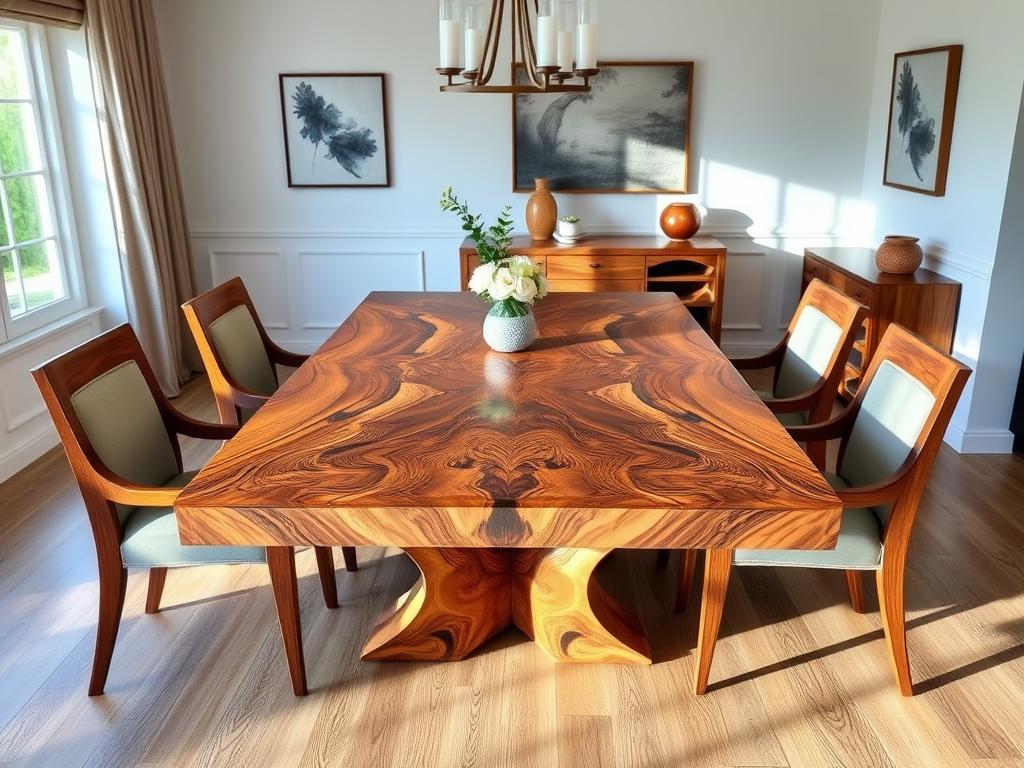
Advantages
Acacia wood has many pros that make it loved by woodworkers. Its hardness is impressive, at 2300 pounds force. This means it’s 55% harder than European White Oak. It’s also tougher than hickory and carbonized bamboo.
It’s also dense, like natural marble, which makes it strong and long-lasting. Acacia doesn’t scratch easily and looks beautiful. It can range from light to dark in color. Fun fact: the British Royal Navy even used it to build ships. This shows how durable it is. With the right care, furniture made of acacia can last for decades.
- Sustainable harvesting practices
- Introducing extra income to local farmers
- Affordable and easy to work with
- Resistant to water and rot
Popular Furniture Items
Acacia wood is used for many types of furniture. You’ll find it in benches, buffets, dining, and side tables. Australian Blackwood is especially popular for fine furniture and cabinetry. It’s known for its rich brown colors.
Acacia is great for outdoor furniture too because it stands up to the weather. Monkey Thorn is used in South Africa for outdoor furniture and boats. Hawaiian Koa is another type, loved for its color and texture. It’s used in furniture, canoes, and ukuleles.
| Type of Acacia Wood | Applications | Unique Features |
|---|---|---|
| Babul Acacia | Furniture, decorative frames | High hardness, density |
| Australian Blackwood | Furniture, cabinetry, veneer | Golden to dark brown colors |
| Monkey Thorn | Outdoor furniture, boat building | Strength, durability |
| Hawaiian Koa | Furniture, canoes, musical instruments | Deep rich colors, fine texture |
Acacia wood furniture also needs little care. To keep it looking good, just wipe it with a soft cloth. Protect it from too much sun and spills from things like alcohol. Because of all these benefits, acacia is a top choice for premium furniture makers.
Acacia Wood vs. Other Types of Wood
Acacia wood is affordable, durable, and visually appealing. It’s often compared with teak and ipe wood. These comparisons highlight important factors for your decision.
Acacia vs Teak Wood
Acacia and teak are popular for high-quality furniture and outdoor use. Teak is very resistant to environmental damage. It lasts for over 75 years with proper care. Acacia also resists water and bugs, thanks to its natural properties. Yet, teak is typically chosen for outdoor projects because it’s more resistant.
Price plays a big role in choosing between them. Teak is pricier, which can affect a buyer’s decision. Acacia offers a balance of cost and durability, making it a more affordable option than teak.
Comparison with Ipe Wood
Acacia and ipe wood are quite different. Ipe wood, or Brazilian walnut, is very dense and hard. It’s great for furniture that will get a lot of use and outdoor decking. Its density means it’s scratch-resistant and lasts a long time.
Acacia, while not as hard as ipe, still beats many hardwoods with its Janka rating. It’s especially good for use indoors or in light outdoor settings. Its density ensures it performs well in many situations.
Acacia is more sustainable than ipe. It grows in eco-friendly plantations, making it a renewable resource. Ipe’s growth and harvesting have a more significant environmental impact.
Cost Considerations
Cost is a big factor in choosing acacia over teak and ipe. Acacia sits in the middle price range. Teak and ipe are premium, but acacia is more budget-friendly. Acacia dining tables offer value for their price, much like teak.
Acacia’s abundance keeps its price down. It grows quickly in places like Asia and Australia. This makes acacia a top choice for those wanting quality without the high cost.
Acacia Wood Projects and DIY
Acacia is a top pick for DIY lovers because of its strength and flexibility. From plant stands to unique crafts, many showcase their acacia projects online with hashtags like #sugarandclothloves.
A well-liked project is the Modern DIY Acacia Plant Stand. You need an Ikea PS plant stand, acacia wood plates, either super glue or E6000, and a few other items. Here’s a simple guide on putting together this stylish, useful stand:
- Cut the acacia into four pieces.
- Glue wood plates to brass cap nuts.
- Sand edges for a smooth finish.
- Attach legs or casters for added stability.
- Secure plant pots by using washers to avoid water damage and screws for sturdiness.
You can finish the project for about $40. To keep your plant stands in great shape, seal them with a water-resistant sealant. Check them often for any damage or rot.
Acacia gives a midcentury vibe, perfect for various DIY ideas. For instance:
| Recommended Wood for Type | Examples |
|---|---|
| Outdoor Plant Stands | Cedar, Teak, Eucalyptus |
| Indoor Plant Stands | Maple, Cherry, Oak |
Additionally, DIY fans are getting into acacia wood crafts like custom furniture and rustic benches. These projects often need wood boards that are 12-in wide by 72-in long. You can make each project unique with different finishes and treatments.
It’s important to know all the wood for these projects is 100% from FSC certified forests. This means they’re sustainably and responsibly sourced. With 4k searches on Pinterest, it’s clear acacia wood DIY projects inspire many crafters.
Conclusion
Acacia wood is a top choice for many uses because it’s strong, beautiful, and eco-friendly. It comes from over 1,300 types of acacia trees. Each type gives us different kinds of wood. This makes acacia versatile and dependable for many projects.
Acacia is great for making furniture and things like outdoor tables. It’s hard to scratch, doesn’t rot easily, and keeps water out. This is why many people love it.
This wood comes from places like Australia, Africa, and South America. It’s popular for use both inside and outside. Australian Blackwood is perfect for making beautiful furniture and instruments. Monkey Thorn works well for outdoor projects and building things.
Hawaiian Koa wood is very special because it’s so pretty and easy to work with. People value it for traditional crafts and fancy furniture.
Acacia is better than many other woods for lots of reasons. It doesn’t let water in, lasts a long time, and doesn’t cost too much. It’s also a smart choice for those who care about the planet.
It’s not just about looks; acacia wood is also very practical. It’s amazing for making things like kitchen islands and cutting boards. Acacia wood is a valuable material for woodwork and more.
FAQs
What makes acacia wood so durable?
Acacia is known for being strong. It stands up well against wear and tear. This makes it perfect for places with lots of activity and furniture that gets used a lot.
Where does acacia wood come from?
Acacia trees, where the wood comes from, grow in many places. You can find them in Australia, Africa, Asia, South America, and the Pacific Rim. These trees thrive in different environments, from dry deserts to lush forests.
What are the popular varieties of acacia used in furniture?
For furniture, people often choose Australian Blackwood, Monkey Thorn, and Hawaiian Koa. Another two are Taiwanese acacia (Acacia Confusa) and Mulga Acacia. They’re valued for their special qualities and uses.
How hard is acacia wood?
Acacia wood’s hardness is rated from moderate to high on the Janka scale. This shows it’s strong enough for durable furniture and decorative pieces.
What is Taiwanese acacia (Acacia Confusa) used for?
In Asia, Taiwanese acacia is chosen for furniture and decor. It’s because it’s a dense and strong hardwood. Plus, its grain looks really nice.
Is acacia wood suitable for outdoor furniture?
Yes, acacia works great outdoors. It’s resistant to weather, keeping its shape and look over time. This makes it a smart pick for outdoor furniture.
Why is acacia wood ideal for cutting boards?
Choosing acacia for cutting boards is smart. Its hardness stops knife marks. It also has properties that fight bacteria, so it’s good for kitchens.
What are the advantages of using acacia in furniture making?
Acacia is durable, beautiful, and withstands the elements well. This wood’s rich colors and patterns make any space warm and welcoming.
How does acacia wood compare to teak?
Acacia and teak are both durable and beautiful. But, acacia is usually less expensive. It’s a good option if you want quality without a high price.
Is acacia wood suitable for DIY projects?
Yes, acacia is great for DIY lovers. It’s easy to shape and finish in different ways. This makes it versatile for a lot of projects.











